PURPOSE This study identifies girls with learned helplessness in middle school physical education coping mechanism and growth process. METHODS Eight female 9th graders who previously experienced learned helplessness in physical education were purposely selected with their physical education teachers’ recommendation. After individual in-depth interviews, data were analyzed using inducted data analysis. RESULTS Findings show that the girls could overcome learned helplessness through their own will and with support of peers and physical education teachers. Moreover, they have undergone various growth processes after coping with learned helplessness. Recently, they have self-confidence in physical education classes and desire to learn physical education. Additionally, results showed that the girls’ learning will in physical education influenced other subject matters, which helped them overcome new challenges in their school and daily lives. CONCLUSIONS Results can be used as practical guidelines to develop educational programs and create policies for girls with learned helplessness.

Purpose The purpose of this study was to explore environmental constraints that hindered the physical activity of female students in daily life, and then to provide alternatives to improve the problems based on the social ecological model. Methods Research participants were twelve female students to be selected in two schools(Norang, Parang middle school), the process of data collection(orientation, photovoice implementation, focus group interview) and analysis(choosing a photo, contextualizing, subjecting) were conducted according to the Photo-voice. Results The constraints of physical activity in daily life were categorized on ‘playground as like a desert’(leisure domain), ‘space of recess and in-active play’(family domain), ‘transportation replaced by mom and dad car’(transportation domain), ‘space of the only exercise as well as reproduction of gender discrimination’(school domain). Conclusions The environmental constraints were analyzed as academic, physical, daily living, socio-cultural environment. Lastly, alternatives for promoting physical activity of female student were proposed in the level of organization, community, public policy based on the social ecological model.















Purpose The purpose of this study was to develop a comprehensive model for facilitating and hindering factors about girls' participation in physical activities. Methods Based on systematic analysis, 26 foreign journals published from 2005 to 2016 were comprehensively analyzed. The journals were directed to facilitating and hindering factors of girls' physical activities. A model was developed by categorizing various factors in the previous studies, and by conceptualizing those categories, and by creating visualization of relations between the categories. Results Seven facilitating factors are referred to as 'SPORTS', including ‘Self-recognition’, ‘Physical environment’, ‘Opportunities’, ‘Relationship’, ‘Treatment’, and ‘Social supports’. In contrast, nine hindering factors are conceptualized as 'INCAPABLE' which includes 'Internalized gazes’, ‘Negative feedback’, ‘Competitiveness’, ‘Alternativeness’, ‘Perceived danger’, ‘Appearance’, ‘Bad feeling’, ‘Lack of opportunities’, and ‘Effeminate norms'. Conclusions It is suggested that the girls' physical activity patterns vary depending on whether the girls subjectively interpret the physical activity or girls are being objectified by other's evaluation. And those individual, relational, and environmental levels are needed to strengthen the subjectification of girls.



The purpose of this study was to examine the influence 12 weeks of Hatha yoga exercise has upon changes in postural control ability of high school girls. The research subjects were 27 high school girls (yoga group: 15, control group: 12). Changes that took place after yoga exercise were comparatively analyzed after having them train Hatha yoga for 12 weeks. The research variables that were measured were the moving range of COP in static postural balance, Rambling & Trembling in the moving range of COP, and postural change in the sagittal plane. The mean and the standard deviation(SD) were calculated on each measurement item by using the SPSS Ver 21.0 statistical program. To verify difference in pre-value between groups, an independent t-test was carried out. The verification of change according to time within the group after 12 weeks of yoga exercise was conducted in a paired t-test. To inspect interaction by time and group before and after yoga exercise, two-way repeated measures ANOVA was implemented. As a result, the moving distance of the pre and post direction in the moving range of COP was reduced. Rambling and Trembling in the pre-and-post direction significantly decreased. And in postural change of the sagittal plane, there was significant interaction between two groups in the neck and thigh parts. It was thought that the 12 weeks hatha yoga exercise has positive influence upon improving the postural control mechanism in female high school students and has an effect even on change in the postural control ability of an individual.

PURPOSE This study conducted a longitudinal analysis of physical activity levels and characteristics of middle-school boys and girls over a three-year period before and after the COVID-19 pandemic. METHODS This study used a sequential mixed-methods research design. In the quantitative study; three-dimensional accelerometers were used to measure weekly physical activity and sedentary time over three years (2019, 2020, and 2021) among 33 middle-school boys and girls, and the data were analyzed using repeated measures analysis of variance. In the qualitative study, data were collected and analyzed through focus group interviews with five participants. RESULTS The quantitative study indicated a significant increase in sedentary behavior and significant decrease in low-intensity activity and MVPA during the first year of the COVID-19 pandemic. In the second year of the pandemic, no significant difference was observed in sedentary behavior, low-intensity activity, and MVPA compared to the data collected in the first year. During the pandemic’s first year, qualitative study identified the following physical activity problems: “lockdowns,” “sedentarization of leisure,” and “reduced structured physical activity.” The following reasons were identified for the lack of improvement in physical activity during the second year: “intensified sedentary lifestyle habits,” “weak social networks,” and “lack of energy to exercise.” CONCLUSIONS The COVID-19 pandemic has led to a significant decrease in physical activity and a significant increase in sedentary behavior among middle-school students in South Korea, and even as the environments for physical activity have recovered, the physical activity problems of the early stages of the pandemic have not improved.
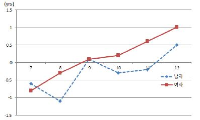
The aim of the study was to examine the tracking of body composition and physical fitness in boys and girls for 6 years. Thirty-seven boys and girls participated throughout the study. All measurements were performed annually. Body height, body weight, circumferences and skinfold thicknesses were measured and skeletal maturity was assessed. Body composition and bone mineral density were measured by DXA. Nine physical fitness tests were administered. Results of the study showed that there are significant interaction effects of time and group for body height(p<.01), waist circumference(p<.001), and skinfolds at triceps(p<.01), suprailiac(p<.01), thigh(p<.001) and medial calf(p<.01). All anthorpometric variables except skinfold thickness increased during the study period. Significant interaction effects of time and group were found for percent body fat(p<.05) and bone mineral density(p<.01). Percent body fat and fat tissue increased in boys from 7 to 11 years, then decreased in 12 years. Lean tissue(p<.001), bone mineral content(p<.001) and bone mineral density(p<.001) increased both in boys and girls throughout the study. There were significant interaction effect of time and group on sit and reach, standing long jump and sit-ups. In conclusion, percent body fat and fat tissue increased until 11 years, lean tissue and bone mineral density increased throughout the study both in boys and girls.


Purpose The purpose of this study was to examine students’ perceptions of girls’ participation in physical education(PE) in elementary schools and examine the impacts of a girl-friendly integrated program on children’s participation in PE classes. Methods The participants were 10 fifth graders (5 girls and 5 boys) and their teacher in an elementary school. Data which were collected from in-depth interviews with students, students’ journal entries, field observation, and teacher’s reflective journal entries were analyzed inductively. Results Findings revealed that boys perceived girls’ participation as passive, possessing a low level of skills, and staying at the peripheral position. Meanwhile girls expressed their desire to demonstrate their strengths in PE classes and were afraid of boys’ criticism regarding their lack of skills. There were also misconceptions and misunderstanding on girls’ PE participation between boys and girls. In order to resolve these issues, a girls-friendly integrative program was designed. based on the four guiding principles drawn from students’ perception: (1) from ignorance to interest, (2) from misunderstanding to understanding, (3) from sport skills to sport values, and (4) from competition to cooperation. The program integrated boys and girls for promoting active interaction and also integrated competence, knowledge, and dispositions to accommodate students’ various ways of PE participation. Findings revealed that the program had: (1) diversified students’ perceptions of PE participation, (2) promoted students’ diverse and active participation, and (3) established classroom atmosphere which emphasized positive values.


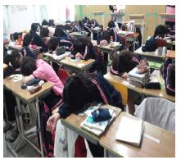
The purpose of this study was to explore Physically Activity Lifestyle pattern & constraints of high school girl in city, and then to propose P.A. promotional ways. I used International Physical Activity Questionnaire Long version and accelerometer to examine outline of P.A. pattern, and photo-voice as qualitative research techniques. The results were as followings. First, sedentary lifestyles of students in G girls' high school was terrible. Accelerometer was said that their inactive time were about 92.4%, however their moderate to vigorous time about 0.76% of the total time of a week. And, school domain of four domains(school, transportation, leisure, domestic chores) were the most active domain of all. Second, P.A. constraints were analyzed as 'because of something no'(time, effort, will, space, physical skills and person) and 'because of something'(smart phone, car, gaze, rules). The key cause were a shortage of time caused by academic based on school curriculum, sedentary leisure and transportation culture. Lastly, I proposed high school girl' P.A. promotional ways in basis of social ecological model.

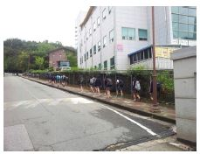
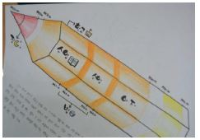
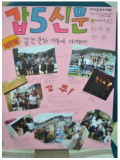
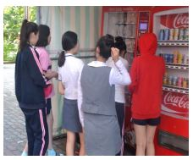


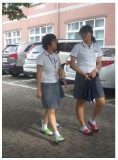

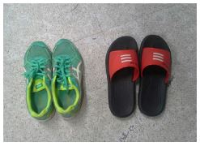
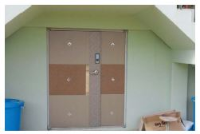
Purpose The purpose of this study was to investigate characteristics of levels of physical activity in considering gender and different types of competition-oriented physical activity classes using three-dimensional accelerometers. Methods A total of 981 students(505 male students, 476 female students) in six different types of physical education classes were participated in this study. All of the six different types of physical education classes were competition-oriented classes, and levels of physical activity were accessed by three-dimensional accelerometers. Data were analyzed using t-test and ANOVA. Results First, descriptive analyses of participation time of levels of physical activity showed that MVPA of physical education classes is 10.26 mins (22.89%) on average, and, MVPA showed differently in different types of physical education classes in the order of T ball(14.61 mins), flying disk(12.61 mins), soccer(10.78 mins), volley ball(10.56 mins), basketball(9.64 mins), and table tennis(5.73 mins). Second, female students showed significantly lower levels of MVPA in all the different types of physical education classes. Third, post-hoc analyses showed that significantly higher levels of MVPA were found in T ball physical education classes and significantly lower levels of MVPA were found in table tennis physical education classes, compared to other types of physical education classes. Conclusions MVPA in physical education classes is not satisfied with recommended MVPA, and MVPA in Korean physical education classes is lower than MVPA in same types of physical education classes in other countries. In addition, significant mean differences of MVPA are found between male and female students, and new sports physical education classes show higher levels of MVPA compared to classic sports physical education classes. These results indicate that competition oriented physical education classes widely used in Korea need to find ways to increase MVPA and to overcome different levels of MVPA between male and female students.
PURPOSE This study aimed to establish a standardized evaluation of the consistency and reliability of the results of the 2018 Buenos Aires Youth Olympics. METHODS The results of the preliminary and the final rounds of the individual Boys and Girls competition of the 2018 Buenos Aires Youth Olympics were collected. Data were organized using Microsoft Windows Excel 2021. Windows SPSS 26.0 was used for descriptive statistics. Intraclass correlation coefficient calculation was used to analyze the evaluation score. The winner/loser decision, and the evaluation interrater agreement was confirmed using Fleiss' kappa. RESULTS There was a difference in the scores given by the judges in both the preliminary and final rounds of both competitions. A low correlation was observed between the decided winner of the judges, and the point variance for each item. CONCLUSIONS In the trivium value system, differences in the evaluation strategies of the judges may exist. Thus, improvements to standardize evaluation should be implemented. In addition, this scoring system considers various factors in the evaluation process, and the scoring system is complicated. Therefore, there may be a need to revise the evaluation system and find the optimal number of judges to create a better evaluation.